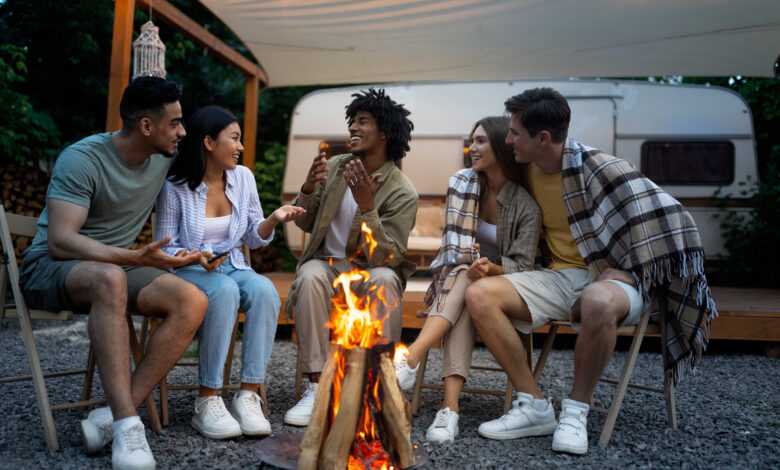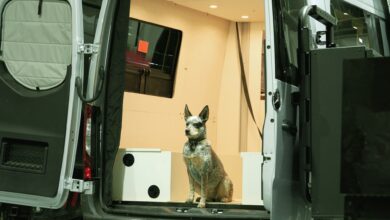You Are Welcome Here
How to make people of all races, ages, religions, sexualities, sizes and abilities feel like valued customers.

When a potential customer sees your ads or your store, how comfortable do they feel coming in to shop? How are you saying you are welcome here to people of all races, ages, religions, sexualities, sizes and abilities?
People of color may feel less than welcome in what they perceive as a “white” store. As a visual merchandiser, I know the power of photos. Several people of color that I spoke with said that if they see a photo with a Black/Hispanic/Asian/Muslim person in the store window or on a visible wall from the street, they are more likely to shop at the store as they know they will be welcome. From the logical point of view, having a photo (or many photos) with each race or religion represented can begin to look overcrowded and like you are playing up to each race/religion for sales reasons.
If you choose to use photos, they need to be big – really big – at least 3 feet by 4 feet and simply framed. Ideally, you’ll have yourself a winner if you can find or produce a photo with two couples having an outdoor dinner in front of an RV – one white, one Black, Hispanic or Asian – or mixed couples. But that may not be easy to organize and shoot.
Another idea was equally agreed upon as giving the same message. A door sign can simply say “We Welcome Everyone” or “All Are Welcome Here.” This is easier than spelling out who you welcome because you’re bound to leave off someone from the list. Or, you can say, “No Sexism, No Racism, No Ableism, No Ageism, No Homophobia, No Fatphobia, No Transphobia, No Hate.” The only problem with this is that there are so many “no’s” that the negativity can visually be stronger than the message.
I’ve seen door signs that say, “Hate Has No Home Here.” Unfortunately, the word that stands out is hate. Leaving out any negativity is worth working toward. If you like lists, a more positive door sign may say: WELCOME – all sizes, all colors, all ages, all cultures, all sexes, all beliefs, all religions, all types, all people – YOU ARE SAFE HERE.
People with limited mobility often feel less than welcome in a retail store especially when the aisles won’t accommodate a wheelchair or walker or there’s no handicap access. That’s a problem with many existing buildings that have walk-ups to get into the store and then a second floor with no ramps. Revamping older buildings is costly, and in some cases, very challenging architecturally. An outside ramp is sometimes less expensive than reworking the inside of your store. If you can get people into the store who need a ramp, perhaps have a table and chairs (or area for them to stay in their own chair at a desk) so you can present different options using a tablet, laptop, brochure or catalog without having to go upstairs.
Older customers often have specific needs in order to feel comfortable in your store. Besides the obvious potential issue of floor level changes, often chairs are unwelcoming to older people. To buy the correct seating for seniors (which will work perfectly well for younger people), close your eyes and imagine that your knees hurt when you bend them, your back throbs with pain when you lean forward and your balance is a little off due to arthritis in your feet. Now, with all that in mind, imagine the only seating in the store is an Adirondack chair. Not an appealing thought or particularly doable for anyone with sore joints. Plus, you’d need someone to pull you up and out of it.
The ideal chairs for people of all ages have sturdy arms, are of normal height (18 inches) and a slightly wider seat. They should be rated to hold up to at least 250 to 300 pounds. Sturdier is better. The chair need not be upholstered; it can be wood or metal, but adding an upholstered seat will make it more welcoming and comfortable. Try to buy a chair with a seat you can remove to recover as needed. Also – and this huge – don’t buy a chair you haven’t sat in yourself. Buying chairs online based on reviews often gets you chairs that only work for the reviewer, not the multitude of different body types you have coming into your stores.
Dark, dramatic showrooms that just light up RVs can look fabulous and intriguing. Just remember to also light the signage. People over 45 or so have a much more difficult time reading if the light is dim. Since there can be a lot of visual information offered for each RV, it makes sense to add an LED spotlight to the signage. If there are any floor level changes, those should be extremely well-lit even if the rest of the aisles are softly lit.
In the restrooms, make sure you install grab bars next to each toilet. They can make a huge difference to someone of any age living with pain.
Balance often becomes an issue due to pain or other health problems. The stairs for each RV on your lot and in the showroom should also have handrails.
Environmental hypersensitivity is very real and can have customers walking in – and walking out of your showroom very quickly. Scent is usually No. 1 on the hit list. Mold, mildew and overly strong chemicals (some cleaning agents) can cause allergic reactions in many people. There is a local Rite-Aid that I can’t spend more than three minutes in without getting a headache. I’ve been told the “scent” (stench in my mind) is the wax they use on their floors. I avoid this close-by store because of that odor. Please ask customers who don’t come in often if your store has any odor.
For some, perfume allergies are very real. If you are promoting a line of scents for your RVs, consider citrusy scents as they rarely annoy scent-sensitive people. You may want customers with scent concerns to look at The Motorized Home’s website and search for “how to make your RV smell good,” which gives excellent advice that works for your showrooms as well.
Loud music or flashing lights can trigger panic reactions in some people. Unless your only customers are tweens, neither make sense in an RV showroom or parts store. Music works best when it’s soft enough to hear but not so loud that it makes conversations difficult.
The most important way to welcome people into your store is to look up from whatever you’re doing or whomever you are speaking with, smile and say “Hi.” That smile and hello are a powerful way to help people who otherwise may feel anxious, defensive or uncomfortable sense that they are desirable customers. It is worth more than all the signs and photos on Earth.


